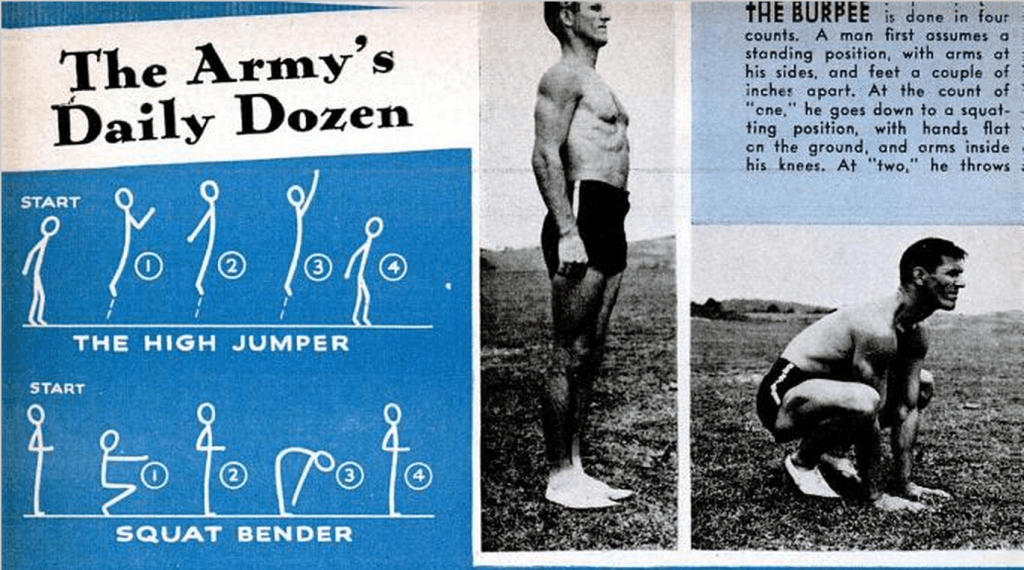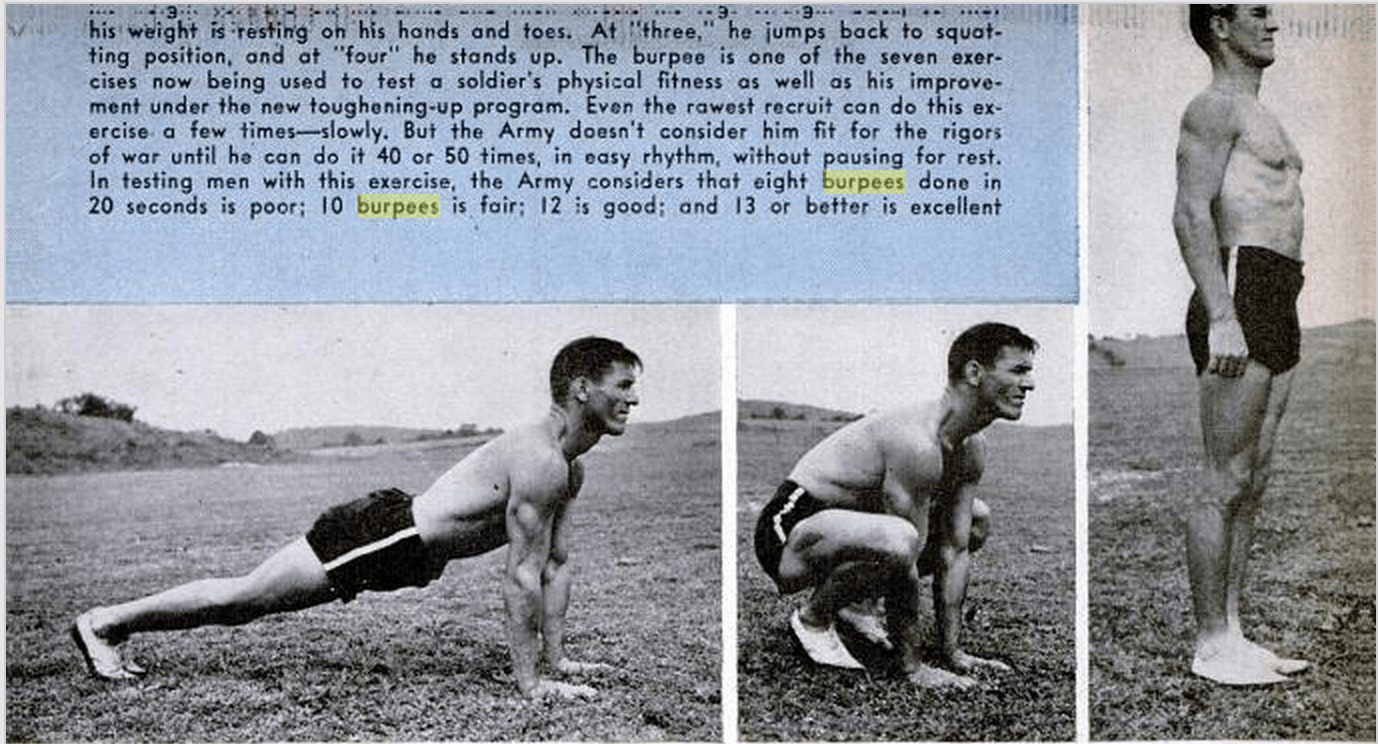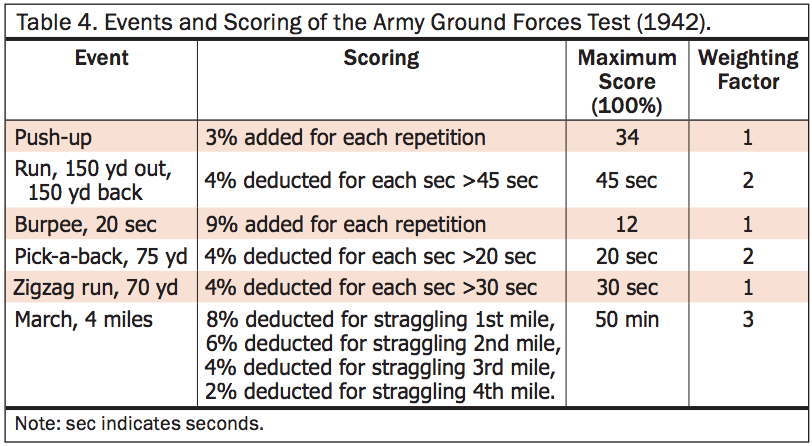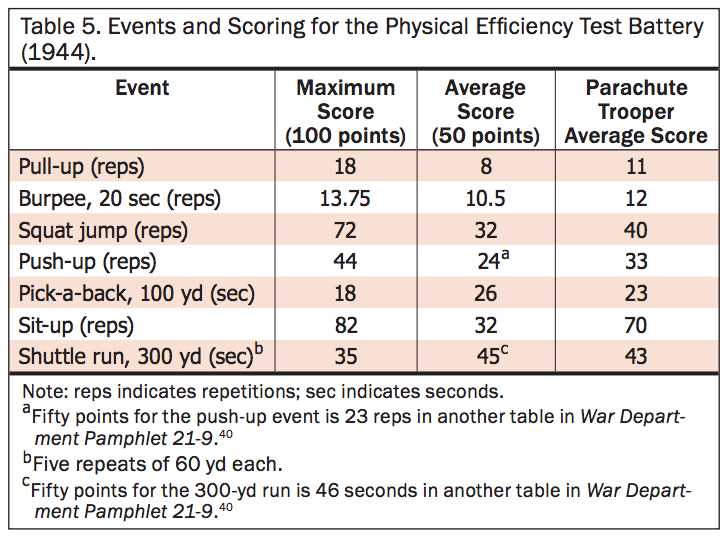What is a "Burpee" anyway? Learn the history and science of the Burpee and how to use the Burpee for conditioning drills and as a great workout for your HIIT routine.
Burpees are tough and will work your tail off.
An exercise that hurts so bad it must be good for you.
When I do burpees, I want to throw up. No other body movement works the heart and muscles in such a gut-wrenchingly effective way. This one motion activates muscles of the upper and lower body and makes your heart pound out of your chest wall.
If you want to take your fitness to the next level or your looking for weight loss, you may want to consider Burpee conditioning drills in your high-intensity interval training (HIIT) program.
How to do a Burpee
From standing position – squat down and jump your feet backwards into a plank position (like the start of a push-up). If you want, for added difficulty, touch your chest to the ground by doing a push-up. Jump your feet back to your hands and stand up. Or, you can jump up to add another element of difficulty.
Burpees hurt in an awful, but good way.
If I remember my college lit class well enough – a level of Dante’s inferno has poor souls doing Burpees.
A Brief History of the Burpee
Who thought up this torture?
The maneuver was created by Royal H. Burpee during his PhD thesis to assess fitness capacity (and incapacity) in men and boys in 1940. Dr. Burpee was a fitness pioneer in his time and published a book about quickly assessing physical fitness in men and boys. His granddaughter wrote a wonderful article about the history of the Burpee and it’s creator, “Goog” as she endearingly referred to her grandfather. A must-read article for Burpee enthusiasts.
The timing of the Burpee creation was perfect for the Army and Military in need of a quick assessment for recruits and for trainees going into World War II.
In 1942 The Army Ground Forces published the Army Ground Forces Test that included the Burpee as one of six exercises for soldiers to complete and be scored on.
In 1944 a war department pamphlet was published that also included the Burpee in the “7 best tests” in the Physical Efficiency Test Battery.
A Popular Science article from 1944 demonstrates how the burpee is completed.

 The Science of the Burpee
The Science of the Burpee
My experience with burpees is limited to home workout programs (where I curse having to complete them). This made me wonder whether a burpee had any science chops to it.
Turns out it does.
Dr. Fist of the US Military Academy published an article in the Journal of Strength & Conditioning Research this year comparing high-intensity intermittent calisthenics (aka burpees) to sprint interval training on a cycle. He took eleven men and women ROTC cadets and had them complete 4 bouts of 30-second “all-out” efforts interspersed with 4-minute of recovery for both cycling and high-intensity intermittent calisthenics (as many Burpees as they could do in 30 seconds followed by 4 minutes of rest).
He measured their heart rate and VO2 peak and found no significant difference.
This suggests that high-intensity intermittent calisthenics are similar to sprint interval training in cardio response and likely (though not tested) produce similar physiologic adaptations over time.
This type of whole-body aerobic–resistance training may also improve muscular endurance when compared to moderate endurance aerobic exercise based on a study in females. Sets of 8 × 20 seconds of a single exercise (burpees, jumping jacks, mountain climbers, or squat thrusts) separated by 10 seconds of rest per session were compared to 30 minutes of moderate aerobics.
Both groups showed improvement in aerobic fitness, but only the whole-body aerobic–resistance training group showed improvements in muscle strength and endurance.
What makes the Burpee so darn demanding?
As far as I can tell this has not been tested. It is likely the quick up and down motion of the body that is taxing to the heart. Physiologically, blood shifts with this up and down motion and the heart needs to pump hard to keep the blood where it belongs. This is why you may feel a bit of lightheadedness with completing burpees. If you have a heart condition you should work with your personal physician to make sure you can complete these safely.
Are Burpees safe?
That depends.
My take is that Burpees can be done if you are healthy, with the caveat that if you are “getting older,” you may want to re-consider. There is potential for injury if you are de-conditioned as it could stress the knees and back with poor technique. Burpees may not be worth the effort when other more static exercises can be done. It depends on your goals. As discussed in this article by trainer Jamie Atlas who feels that this maneuver should be left to those in the military where the Burpee is a perfect exercise to practice avoiding “lead poisoning.”
If I have not convinced you to abandon the Burpee, then at least do it safely and with good form.
How to do a Burpee Workout (Burpee Conditioning Drills)
The research mentioned earlier suggests a simple Bupree conditioning drill would be 30 seconds of Burpees “all out” for 30 seconds followed by a rest period for recovery for 4 minutes. Do 4 bouts of this and be done. Now, I am not a Burpee expert, but the internet is filled with excellent examples that can help you. Here is the basic Burpee from Warrior Fitness.
Are you ready to get serious? CrossFit is an intense and highly popular physical fitness trend that is hard to define because it is so broad and inclusive. CrossFit utilizes many whole-body maneuvers such as Burpees. The CrossFit open in 2012 started with 7 minutes of Burpees. Talk about torture. If you are looking for an uber-technical explanation on the Burpee and have the goal of becoming a competitive Burpee professional – there maybe no better video than this one from CrossFit Journal. This 9 minute instructional will show you how to become a Burpee machine.
If you get serious enough about the Burpee – you may find yourself doing Burpee back-flips.
Related:
The Evidence:
- Gist et al. Comparison of Responses to Two High-Intensity Intermittent Exercise Protocols. Journal of Strength & Conditioning Research, 2014.
- McRae et al. Extremely low volume, whole-body aerobic–resistance training improves aerobic fitness and muscular endurance in females. Applied Physiology, Nutrition, and Metabolism, 2012.
- Knapick and East. US Army Physical Fitness and Physical Readiness Testing, 2014.




